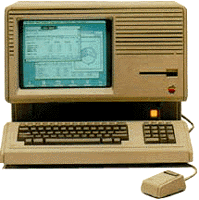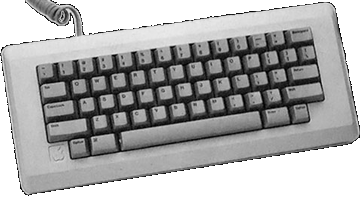Lisa/Lisa 2/Mac XL

Essentials
Family: Pre-Macintosh
Codename: Lisa
Gestalt ID: 2
Minimum OS: LisaOS
Maximum OS: LisaOS/MacWorks
Introduced: January 1983
Terminated: August 1986
Processor
CPU: Motorola MC68000
CPU Speed: 5 MHz
FPU: none
Bus Speed: 5 MHz
Register Width: 32-bit
Data Bus Width: 16-bit
Address Bus Width: 32-bit
ROM: 16 kB of diagnostic and bootstrap code present
Expansion Slots: 3 Proprietary
Video
Monitor: 12" 720 x 364 built-in (B/W, rectangular pixels)
Storage
Hard Drive: 5 MB external (10 MB in some configurations of Lisa 2/MacXL)
Floppy Drive: two 871 kB 5.25" (one 400 kB 3.5" in Lisa2)
Input/Output
Serial: 2 RS-232
Audio Out: Continuously Variable Slope Demodulator (CVSD)
Speaker: mono
Miscellaneous
Power: 150 Watts
Dimensions: 15.2" H x 18.7" W x 13.8" D
Weight: 48 lbs.

Notes
The Lisa included a single parallel port, which was dropped in the Lisa 2 and MacXL. The Lisa 2 and MacXL used 2 400 kB Sony 3.5" floppy drives, and both had 10 MB hard drives. An optional screen upgrade was available which allowed the Mac XL to use square pixels, for better Mac OS emulation. Screen resolution after this upgrade was 608x431.
Named for one of its designer's daughters, the Lisa (pictured below left) was supposed to be the Next Big Thing. It was the first personal computer to use a Graphical User Interface. Aimed mainly at large businesses, Apple said the Lisa would increase productivity by making computers easier to work with. The Lisa had a Motorola 68000 Processor running at 5 MHz, 1 MB of RAM two 5.25" 871 kB floppy drives, an external 5 MB hard drive, and a built in 12" 720 x 360 monochrome monitor. At $9,995 it was a plunge few businesses were willing to take. When the Macintosh came out in 1984 for significantly less money, it eroded the Lisa's credibility further. Realizing this, Apple released the Lisa 2 (pictured above right) at the same time as the Mac. The Lisa 2 cost half as much as the original, replaced the two 5.25" drives with a single 400 kB 3.5" drive, and offered configurations with up to 2 MB of RAM, and a 10 MB hard drive. In January 1985, the Lisa 2/10 was renamed the Macintosh XL, and outfitted with MacWorks, an emulator that allowed the Lisa to run the Mac OS. The XL was discontinued later that year.
Picture Credits:
John Greenleigh/Flipside Studios
Apple, Inc.
Date: Wed, 29 Mar 2006 21:03:08 -0800
From: ED Stephenson
Subject: Your entry on the Lisa
You fail to mention one of the Lisa's most important roles in Apple history - as a programming platform for the early Macs.
I had a 512k "fat mac" and it was almost incapable of running the software necessary to program for it. The Lisa's speed and of course the hard drive gave it a place in the mists of legend amongst power users - it was the machine all the programmers used to make the fancy games work!!!
